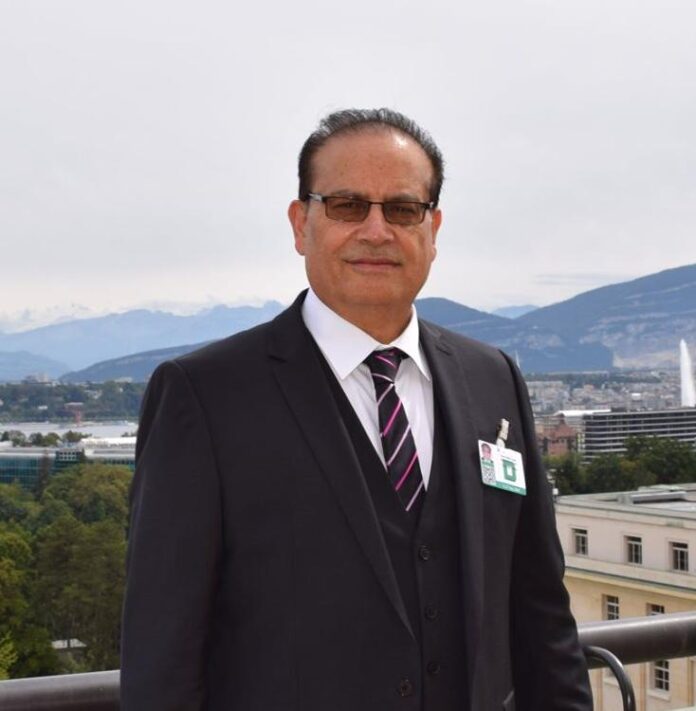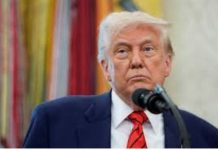Qamar Bashir
During my tenure as Press Minister in France, I witnessed firsthand the chaos of the Yellow Vest movement, which erupted in November 2018. The protests, sparked by rising fuel taxes and economic grievances, quickly evolved into a larger anti-government movement. Every weekend, thousands of protesters wearing yellow vests swarmed Paris, particularly targeting the posh Champs-Élysées, where the Embassy of Pakistan was located. The protests frequently spiraled into violence, with vandals setting vehicles ablaze, smashing windows of luxury boutiques, looting high-end stores, and even targeting banks by pulling out ATMs.
This movement turned into a prolonged cat-and-mouse game between protesters and law enforcement, who often resorted to tear gas, water cannons, and mass arrests to contain the destruction. Over 200,000 people participated at the peak of the protests, causing over €200 million in damages in Paris alone. The movement severely impacted France’s tourism industry, resulting in a 10% drop in bookings and a 30% decrease in tourist revenues during critical holiday seasons. The disruptions also tarnished France’s global image, and its ranking in the Reporters Without Borders Press Freedom Index fell from its usual top 10 position to 33rd, the lowest in Europe at that time. The unrest not only challenged the government but also left lasting scars on the French economy and society.
It appears that the PTI leadership may have drawn inspiration from the strategy employed during the Yellow Vest movement in France. Like the Yellow Vests, PTI seems to rely on frequent, large-scale protests to challenge the government’s authority. PTI’s strategy of organized and frequent protests has proven effective in multiple ways, although it comes at a high cost to the public and the economy.
PTI’s protests have effectively kept the ruling coalition on the defensive, especially on political and electoral fronts. The protests continue to cast doubts over the legitimacy of the ruling coalition, accusing them of coming to power through rigged elections, particularly citing the manipulation of Form 45 and Form 47. PTI claims that the National Assembly members, who passed critical legislation, including constitutional amendments, do not represent the will of the people. These claims have not only disrupted parliamentary proceedings but also forced the government to allocate resources to counter PTI’s legal challenges and public demonstrations.
The alleged manipulation of Form 47, where election results were reportedly altered in favor of the ruling coalition, remains a critical point of contention. Form 47 discrepancies highlight how PTI’s protests have successfully raised doubts about the electoral process. Furthermore, PTI’s strategy of street agitation and pressure tactics has forced the government to delay or reconsider sweeping constitutional changes that they intended to push through the National Assembly.
PTI’s consistent pressure on judicial matters has also played a role in reshaping Pakistan’s political landscape. Their protests against what they deem politically motivated cases have often rallied public support, placing the judiciary under intense public scrutiny. Legal challenges initiated by PTI have frequently led to delays or the invalidation of government actions, such as their intervention to challenge the amendments in the Supreme Court’s powers and electoral laws.
In this context, PTI’s protests have indirectly shaped the judicial narrative, even pushing the Supreme Court to review certain actions taken by the government. As a result, the judicial process has become an additional arena where the PTI has sought to counter what it sees as unconstitutional or undemocratic practices by the ruling coalition.
PTI’s protest strategy, however, comes at a steep economic cost to the country. Disruptions caused by their protests—whether in major cities or on critical national routes—result in financial losses on a large scale. Businesses in cities like Islamabad, Lahore, and Karachi report up to a 30% drop in revenue on days when PTI’s demonstrations are active. These losses, compounded over time, have taken a toll on businesses and employment.
Transport disruptions during protest days also create logistical nightmares, with goods stuck in transit and supply chains slowing down. This leads to price hikes for consumers and supply shortages in the market, further hurting the economy.
The government’s response to PTI’s protests has added additional pressure on national resources. The frequent deployment of anti-riot forces, tear gas, and other crowd-control measures not only strains law enforcement but also the national budget. The costs of policing PTI’s protests are substantial, with tear gas, fuel, and logistical expenses running into millions of rupees per protest day. According to estimates, the government allocates a significant amount from its law-and-order budget to deal with PTI’s frequent protests, leading to a drain on public resources that could be used elsewhere.
The law-and-order situation further deteriorates during protests as public property is often damaged, exacerbating the financial burden. PTI’s protests have raised concerns about the government’s ability to maintain control, tarnishing Pakistan’s image abroad. This, in turn, leads to lower tourism rates and diminished foreign direct investment (FDI). Investors and tourists are deterred by the political instability, adding further pressure to an already struggling economy. Tourism in Pakistan, which had been gradually increasing, saw a decline due to these political uncertainties and unrest.
Ultimately, PTI’s strategy, while effective in challenging the government on multiple fronts, leaves the average citizen grappling with the negative consequences. Business losses, reduced foreign investment, and diminished employment opportunities are felt across the country. The wider economy suffers from these disruptions, and the trickle-down effects are evident in the loss of jobs and business closures.
The French government ended the Yellow Vest movement by key policy reversals, such as canceling the fuel tax hike and increasing the minimum wage, addressing immediate grievances, while Macron’s “Grand National Debate” gave citizens a platform to voice concerns. Additional reforms, including tax cuts and support for rural areas, targeted underlying economic issues. Over time, the movement lost momentum due to internal divisions, public opinion shifts, and protest fatigue, allowing the government to de-escalate the crisis.
To defuse the PTI movement, the Pakistani government, judiciary, and parliament can learn from France’s handling of the Yellow Vest protests by adopting a balanced approach. This includes initiating public dialogue to address grievances, such as electoral concerns, through transparent reforms and restoring election tribunals. While making reasonable concessions, such as ensuring fair electoral processes, the government must maintain strict law enforcement against violence, distinguishing between peaceful protesters and agitators. Additionally, fostering protest fatigue and addressing economic concerns through targeted reforms can shift public opinion and weaken the movement, helping to restore political stability.
Qamar Bashir
Former Press Secretary to the President
Former Press Minister to the Embassy of Pakistan to France
Former MD, SRBC, CEO, ATV

















